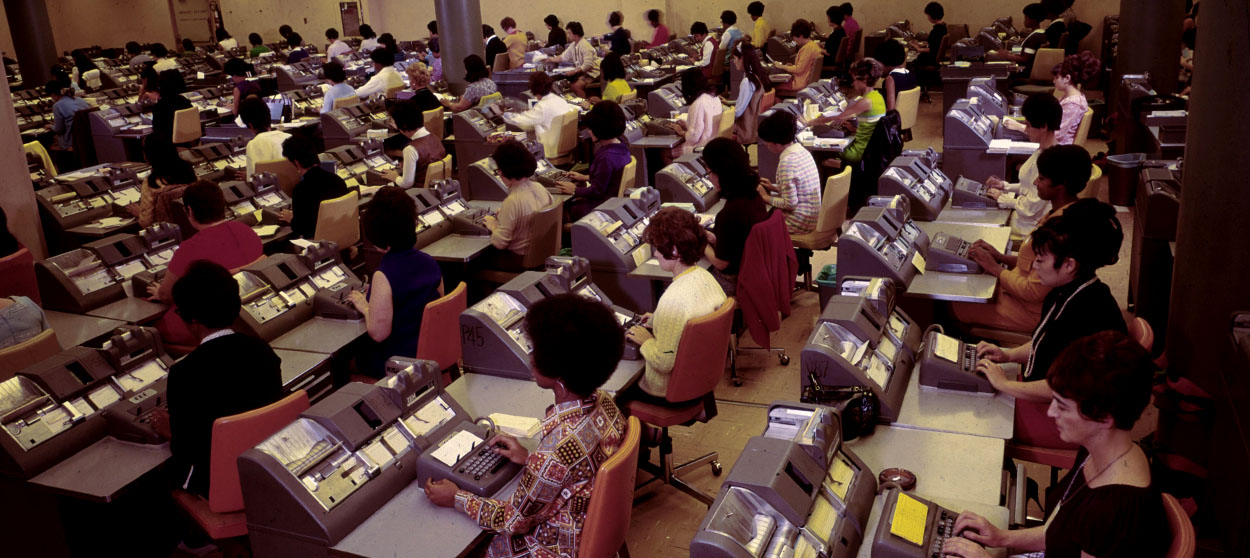Down with office dress codes
The thermostat wars aren't just about air temperature


Now that summer is upon us, the gender wars over office thermostats are about to heat up. As has been increasingly noted, a lot of women are stuck in perpetually frigid office conditions, forced to layer up with sweaters and so forth even in the height of summer.
But what articles on the topic often fail to draw out is how the battlefield of office temperatures is shaped by an underlying factor: office dress codes. Significantly loosening up rules for office attire — while also heating up office spaces — would be a win-win conclusion to the hostilities.
Office temperatures around the country are infamously set with an eye to men's comfort, not women's. Apparently there's even an oft-used formula for office A/Cs derived from male body heat production. When Cynthia Nixon debated Andrew Cuomo in the New York governor's race last year, her campaign requested the debate room temperature be set at 76 degrees, and noted that workspace temperatures are "notoriously sexist." The General Services Administration agrees with Nixon, stating that optimal office temperatures are between 74 and 78 degrees — though, as of a decade ago, 40 percent of all buildings surveyed were still keeping things noticeably lower than that.
The Week
Escape your echo chamber. Get the facts behind the news, plus analysis from multiple perspectives.

Sign up for The Week's Free Newsletters
From our morning news briefing to a weekly Good News Newsletter, get the best of The Week delivered directly to your inbox.
From our morning news briefing to a weekly Good News Newsletter, get the best of The Week delivered directly to your inbox.
Within the federal buildings the GSA temperature recommendations most directly cover, only 60 percent of workers say they're satisfied with the office temperatures. Men say they're too hot, while women say they're too cold. Just this week, a study finding came out that female workers perform noticeably better in warmer temperatures. Men perform worse, but not nearly to the same degree that women improve.
The way dress codes complicate this, of course, is by restricting options for adapting to the temperature other than by changing the temperature itself. For men in particular, professional attire requirements or even business casual requirements compound the problem of their already-greater body heat production. If you've ever worked in Washington, D.C., you're familiar with the bizarre sight of men walking around in full suits and ties even in the depths of the city's balmy summers. When I worked in the district, I was lucky enough to inhabit an office that simply required dress shoes, slacks and a button down shirt. But even that got complicated in the summer: I was always going into work in shorts and sandals, while keeping my office attire stashed at my desk to change into.
Obviously, offices are always going to be weighing the comfort of their employees against the desire to present a particular aesthetic, a particular impression to customers and clients, and a particular workplace tenor. But while comfort is a (relatively) concrete matter of clothing choices and temperatures, questions of aesthetics and impressions are shot through with hopelessly subjective cultural assumptions and gender norms that cut in both directions. A dress code or an employer demand that explicitly required women to dress "more feminine" would easily fall afoul of discrimination law, for instance. Yet many dress codes also dictate differences between the sexes — open-toed footwear allowed for women but not men, bare legs allowed for women but not for men, and so forth — that are obviously rooted in gender norms. (Amusingly, one man at a British call center forced his employer to drop their "no shorts" policy after he made headlines by wearing a skirt to work to get around the rule.)
As Jonathan Chait noted on the office temperature wars, "One of the unfortunate paradoxes of our culture is that the gender that generally gets colder is able to wear less in the summer, while the gender that generally gets warmer is expected to wear the same business attire year round. The notion of men wearing shorts even in completely social settings is deeply controversial."
A free daily email with the biggest news stories of the day – and the best features from TheWeek.com
None of this is to suggest that men are the "real victims" here. The point is that rigid dress codes handed down to workers from on high almost inevitably set up zero-sum conflicts over the office temperature. If adjusting your own individual attire isn't an option, then adjusting the office A/C for everyone is the only recourse. If men and women, as aggregate groups, have different temperatures they prefer, then someone's going to lose out. Since male privilege absolutely is a thing in our society, the losers in the fight over the temperature dial have been women.
One solution is to just flip the script of who suffers and force men to sweat it out for a while. But a better solution would be to remove the suffering entirely, by drastically loosening office dress codes across the board. Then men could dress down to adapt to higher temperatures as we crank the office thermostats up a bit.
Women would benefit from a general effort to liberalize dress codes as well. In one incident here in the U.S., a female journalist was prevented from entering the Speaker's Lobby at the House of Representatives because her shoulders were bare. Then-Speaker Paul Ryan ultimately had to ask the House sergeant-at-arms to update the attire policy. And a British employee at PwC caused a dustup in 2016 when she was sent home for refusing to wear high heels.
Surveys and anecdotal evidence do suggest dress codes have loosened significantly over the last five to ten years, particularly thanks to the demands of younger workers. To take a few examples, PwC now allows jeans and sneakers if employees aren't interacting with clients, Virgin Atlantic no longer requires its female flight attendants to wear makeup, JPMorgan just requires business casual, and Target now allows bluejeans. Half the companies surveyed by the Society for Human Resource Management now say they allow casual attire every day, according to NPR.
However, another survey suggests that even in the famously freewheeling tech industry, most companies still require business professional or business casual. And definitions can be sketchy: Firms like General Motors, eBay, and Amazon simply say "dress appropriately," "best judgment" and "comfortable at work," respectively. Those are pretty vague directions that still leave a lot of room for all sorts of biases, from gender norms to plain old-fashioned sentiments, to sneak into individual office spaces. Minimum requirements above which all is allowed might be more helpful — a "no shirt, no shoes, no service" equivalent for the workplace.
All that said, change does seem to be in the wind. Up with office temperatures, certainly. But down with dress codes too. Then hopefully we can all meet in the middle.
Jeff Spross was the economics and business correspondent at TheWeek.com. He was previously a reporter at ThinkProgress.
-
 Trump wants to build out AI with a new ‘Tech Force’
Trump wants to build out AI with a new ‘Tech Force’The Explainer The administration is looking to add roughly 1,000 jobs
-
 The Alps start the countdown to ‘peak glacier extinction’
The Alps start the countdown to ‘peak glacier extinction’IN THE SPOTLIGHT Central Europe is losing ice faster than anywhere else on Earth. Global warming puts this already bad situation at risk of becoming even worse.
-
 ‘It’s hard not to feel for the distillers’
‘It’s hard not to feel for the distillers’Instant Opinion Opinion, comment and editorials of the day
